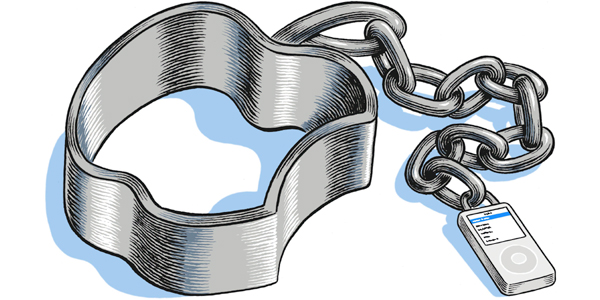iHandcuffs und das iTunes-Geschäftsmodell
Randall Stross erklärt und enttarnt den DRM-Wahnsinn am Beispiel von Apples Fairplay: Artikel in der New York Times.

Deutlich wird, dass es hier nicht mehr darum geht Musik vor dem digitalen Kopieren zu schützen, sondern um die Protektion des iTunes-Geschäftsmodells und um das Binden der Kundschaft:
[W]hen the same tracks are sold by the iTunes Music Store, Apple insists on attaching FairPlay copy protection that limits their use to only one portable player, the iPod. Terry McBride, Nettwerk’s chief executive, said that the artists initially required Apple to use copy protection, but that this was no longer the case. At this point, he said, copy protection serves only Apple’s interests .
Josh Bernoff, a principal analyst at Forrester Research, agreed, saying copy protection “just locks people into Apple.” He said he had recently asked Apple when the company would remove copy protection and was told, “We see no need to do so.”




